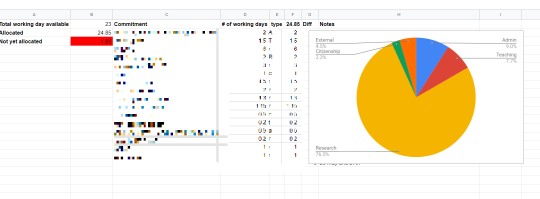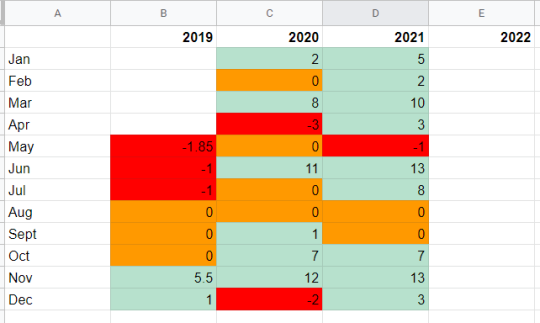Home » Posts tagged 'Personal Task Management'
Tag Archives: Personal Task Management
How did people respond to the disruption to work caused by the pandemic?
Our paper “The new normals of work: a framework for understanding responses to disruptions created by new futures of work” has just come out in Human-Computer Interaction Journal.
Open access to the paper is available here: https://www.tandfonline.com/doi/full/10.1080/07370024.2021.1982391
In the paper, we explore how people adapted to work during the pandemic and how we might understand people’s response to disruption in the new future of work. We highlight a number of issues, tools and strategies that people used in their work to support them while working remotely. For example, virtual commutes, having dedicated space, new scheduling techniques or staying connected with colleagues through virtual chats and async chats
Exploring these with the Genuis and Bronstein model of “new normal” we show 3 kinds of responses:
- waiting to return to old normal,
- finding a new normal and
- anticipating a new future of work.
These new normals of work help us to understand how we can help workers going forward.

We’d like to thank our reviewers for their feedback and our participants for helping develop our work within eworklife.co.uk and a special shoutout to @DilishaBP whose work with the new normal model inspired this work 😀 You can find their paper on Finding a “New Normal” for Men Experiencing Fertility Issues here: dl.acm.org/doi/abs/10.114…
If you find this interesting you might also like our other papers on work during the pandemic:
- Disengaged From Planning During the Lockdown? An Interview Study in an Academic Setting Yoana Ahmetoglu; Duncan P. Brumby; Anna L. Cox (2021) IEEE Pervasive Computing
- Staying Active While Staying Home: The Use of Physical Activity Technologies During Life Disruptions Joseph W. Newbold, Anna Rudnicka and Anna Cox (2021) Frontiers in Digital Health
- Eworklife: Developing effective strategies for remote working during the COVID-19 pandemic A Rudnicka, JW Newbold, D Cook, ME Cecchinato, S Gould, AL Cox (2020) The New Future of Work Online Symposium
The first draft of this blogpost was written as a twitter thread by Joe Newbold and unrolled using ThreadReader
Honorable Mention Award @ CSCW 2020
Yoana Ahmetoglu, PhD student at UCLIC, receive an Honourable Mention Award for her paper To Plan or Not to Plan? A Mixed-Methods Diary Study Examining When, How, and Why Knowledge Work Planning is Inaccurate (co-authored with Duncan P Brumby and Anna L Cox)
Sabbatical thoughts on productivity, the planning fallacy and recovery – month 2 of the commitment calendar
Following my previous post on the commitment calendar I was asked to share the spreadsheet that I am using to help me get a sense of what I have committed to do each month. The link to that is here.
This is now the second month of using it. I sat down on the morning of the first working day of the month to plan out what I was going to get done, and when that was going to happen. I have found it easiest to use half days as the smallest unit. Coming up with the list of stuff that has to be included takes a few steps:
1) Standard predictable things like scheduling some time each week to review my to-do list, plan what needs to be done, update this spreadsheet, schedule stuff in my calendar, etc. I’m scheduling half a day a week for this. The first one of these in the month is used for planning the rest of the month but it’s not clear what the rest of these slots will be used for yet. Sure, I’ll need a bit of time every week to check my to-do list etc but I hope I won’t need half a day a week. This will allow for a little slack in the schedule. I am also being explicit that I need time to do email. I am blocking out half a day a week to get my inbox to zero and respond to messages and do small admin tasks.
2) Then there is the stuff that will vary depending on what your roles are as an academic. I’m including supervision time: how much time you devote to this will depend on how many students you have but need to cover all the time spent on face to face contact, reading and commenting on drafts, etc. I’ve also added in time for teaching (to cover preparation, contact time and marking) and time for citizenship/admin roles such as sitting on committees and leading programmes.
3) Stuff that’s happening this month only – this will be things like attending a conference or taking some holiday.
The next thing that happened was I realised just how over-committed I was for the month. As a result I decided that there were some things that weren’t going to happen this month. Having to make hard decisions and accepting that I can’t get everything done that I might like to has made it easier to say no to other requests that have come in over the past week.
I have found it useful to schedule half day slots in my diary that relate directly to the commitments so i know when I am going to get each of these things done. This is helping me see what can get done in half a day (and what can’t!). For example, is half a day enough time to read a paper and write a review for it? I am hoping that this provides me with more insight into how long it takes you to do different things so it is easier to plan with more accuracy (though it’s well known that we find it very difficult to avoid being overconfident about what we can achieve in a given time https://en.wikipedia.org/wiki/Planning_fallacy ) Even engaging in this planning task has helped me realise that there are some things that I can’t do as early as I would like.
So far this week my 3 working days have been MUCH longer than I had wanted or planned for them to be. This suggests that I’m still overestimating what can be done in a given amount of time. It has also meant that today (Thursday) I’ve been much less productive than I wanted to be and have struggled to motivate myself to do the things I had planned to do. Hopefully tomorrow I will have recovered enough to have the energy to catch up with the things on today’s list that haven’t been finished.
Creating my commitment calendar & getting to grips with the to-do list
I’m forever on the lookout for ways to help me better manage my to-do list. I hate the feeling of being behind and constantly missing deadlines. As I’m currently on a 3 month sabbatical and now that my responsibilities for CHI2019 are over now seems like a good time to review what i do and try to improve things for the future.
I was recently reminded of Amy Ko’s blogpost in which she describes keeping a “commitment calendar” that covers each month into the next 2 years. I remember when i first heard her talk about it on Geraldine Fitzpatrick’s podcast and wondering how on earth she managed it – it seemed like a difficult thing to do. I just couldn’t work out how you would know what you were going to be doing that far ahead. But something made me think that this might be worth trying to i sat down with my notebook and devoted 2 pages to mapping out the next 2 years.
It was actually much easier than i expected it to be. I tend to take holiday with predictable regularity dictated by school holidays – so that was the first thing i put in. And then the conferences that i usually attend also tend to follow a predictable pattern so I added those. I could then predict when i would most likely be working on the papers for those conferences, when i would have teaching and marking to do, and when my PhD students would need feedback on their upgrade reports and final thesis drafts. I’ve also got a bunch of other things already in my calendar – talks i’ve committed to giving, workshops I’m planning on attending, etc.
What was immediately visible was that I already know things that I’m going to be doing in 2 years time and which month those commitments are going to fall in. I could also see that the next 6 months look really busy! But just how busy?
I set about counting how many working days there were in each month and adding this information to the calendar. And then i started estimating how many days each commitment was going to take up. Now it was really clear that I have over-committed myself!
And then i remembered another thing I needed to add into this month! It was clear that paper commitment calendar just wasn’t going to cut-it. As more and more things that I have committed to come to mind I was going to very quickly run out of space on the sheets in my notebook. So I set about transferring it all into a spreadsheet.

And because I love a good pie chart I also worked out what percentage of my time I was spending on research, teaching, institutional citizenship (service) and external/knowledge exchange.
Next I created an overview sheet…..

…and had it automatically colour code each month as red if I am over-committed, amber if I have no capacity to take on any more, and green if there are work days still available to get work done. I was surprised to find that the month I got to the CHI conference is routinely full, as is December.
Engaging in this exercise has given me a whole new perspective on my workload. It now seems really obvious why I struggle to get things done and always feel like I’m behind. If I hadn’t done this I would have thought that October 2019 was pretty empty and that I could easily say yes to a whole host of new things. Now, when I receive a request to do something (examine a thesis, review a paper, join in on a grant with a short deadline, etc) I check the spreadsheet and actually think about how much work will be involved, and whether or not i have time to do it. If I have got time then I add it to the spreadsheet. If I haven’t, I say no. Given that i have so few “spare” days left this calendar year, I’m going to be very picky about what I say yes to using them for.
Edit: following a few requests i made a copy of my spreadsheet available if you want to try it out. Copy and paste it and then you can edit it and put in your own stuff. https://docs.google.com/spreadsheets/d/1jzfJP17AboKEKcqM9if-2fPobnHnD3bvl6E96cd95P4/edit?usp=sharing

